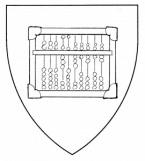Abacus: Difference between revisions
No edit summary |
|||
| Line 27: | Line 27: | ||
<u>'''In the Ordinary'''</u> (as of 4/2012): | <u>'''In the Ordinary'''</u> (as of 4/2012): | ||
* [[http://oanda.sca.org/oanda_desc.cgi?p=ABACUS|Abacus]] | * [[http://oanda.sca.org/oanda_desc.cgi?p=ABACUS|Abacus]] | ||
[[Category:Armory]] [[Category:Need Work]] | |||
Revision as of 18:51, 17 March 2019
WARNING: Do not cite this page as a reference. This page is on this wikispace only to make the content "searchable" and easier to find. If you find the information you seek here, go to the original sources as linked below to verify the information and use them for your documentation. Revised {$revisiondate}.
Illustrations:
Period source/s:
Illustration from PicDic3:
 http://mistholme.com/dictionary/abacus/
http://mistholme.com/dictionary/abacus/
Illustration/s from Brickbat's Armorial Stash - [[1]]:
Pennsic Traceable Art Project: [[2]]
Precedents:
July 2012 Cover Letter: From Wreath: On Abacuses A submission this month led to a discussion of period European and non-European abacuses. The European abacus, from Roman times through the end of our period, used grooves or lines drawn on a board, with counters placed in the grooves or simply on the lines. As a European artifact, this will be our default in the Society. The Oriental abacus, either Chinese or Japanese, used beads strung on a wire. While no evidence of its use in Europe has been presented, either in armory or in art of the period, it is similar enough in function and form to the European version, and there was enough contact between the East and the West that it is plausible that its existence was known. Therefore, as a non-European artifact, its use will be deemed a step from period practice. [[3]]
In the Ordinary (as of 4/2012):
- [[4]]